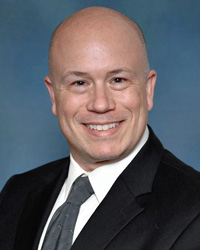Adventures in legal research: how to teach 135 students
This article is from the spring 2022 issue of Hearsay, the semi-annual newsletter of the Wheat Law Library.
Article

For those who are unfamiliar with the way we have taught the research portion of the Lawyering Skills course, allow me to give a short breakdown. Each section of roughly 20 students was assigned a law librarian. That librarian would meet with the students on the third floor of the Wheat Law Library and conduct a type of lab. We would introduce the students to legal research concepts and show them how to use the books. These labs would continue for roughly five weeks, alternating between book assignments and online assignments. When the pandemic hit, we moved toward a strictly online model with the “labs” being more like a group office hour. As I wrote about in the fall 2021 issue of Hearsay (“Hybrid model of teaching legal research is here to stay”), teaching a more online focused approach proved to work.
This semester we find ourselves with a higher than normal first-year student enrollment. With the retirement of one of the key librarians in our research team, we decided to revisit, once again, how we teach research. The first obvious move was to replace the in-library labs with a classroom. Or rather, two classrooms, dividing the first-year students roughly in half. Again, we would rely on the online learning platform Core Knowledge for Lawyers and its corresponding text “Legal Research Demystified” by Eric Voigt, and instructions in book research would require a lighter touch since grading weekly assignments from 135 students would prove to be too much.
With the academics comfortably handled, the question next came down to what I feel is the true strength of our research class: connecting with the students. Assigning small groups of students to a librarian allowed for a level of professional intimacy that can be hard to emulate in a large class. But there are some ways to connect with students even in larger classes.
Personalize the class
What made the small section labs so effective was personalization. To do this in a larger class, we need to become acquainted with as many students as possible. Odds are you won’t get to know each student, and that’s okay. The point is that you are putting yourself out there as someone who is approachable. The best way to do this is to arrive early and chat with students, ideally without you standing at the front of the room. When students ask you a question, check the seating chart for their name and use it. If you don’t have a seating chart or it’s not in front of you, don’t be afraid to ask the students’ names. Also, if possible, move closer to them when answering the question, or simply make eye contact. I know I tend to answer each question as if it’s a lecture being presented to the entire class. But shifting focus toward the individual who asked can go a long way to making the class feel more comfortable and personal. We encourage students to ask questions in class or during office hours. I suggest my students download Microsoft Teams and message me whenever they need assistance.
Promote active learning and class participation: Kahoot!
One suggestion from the author of “Legal Research Demystified,” Eric Voigt, is to use Kahoot!. Kahoot! is a game-based learning platform, used as educational technology in schools and other educational institutions. Its learning games, “kahoots,” are user-generated, multiple-choice quizzes that can be accessed via a web browser or the Kahoot! app. As such it is a great way to engage the students, promote participation and create an energy shift in the classroom. It is a simple way to use interactive lectures. I even recommend having students form small Kahoot! groups, having them work together. With these and other modifications in place, we are optimistic that students will gain the essential skills and foundational knowledge needed to succeed in summer employment and upper-level courses. As with all aspects of legal education, this course will continue to evolve in the future as we continually evaluate best practices and work to improve the student experience.
Blake Wilson
Assistant Director for Instructional and Faculty Services
Contact the Library
Circulation Desk
785-864-3026
Reference Questions
lawref@ku.edu
785-864-3025
Christopher Steadham, Director
csteadham@ku.edu